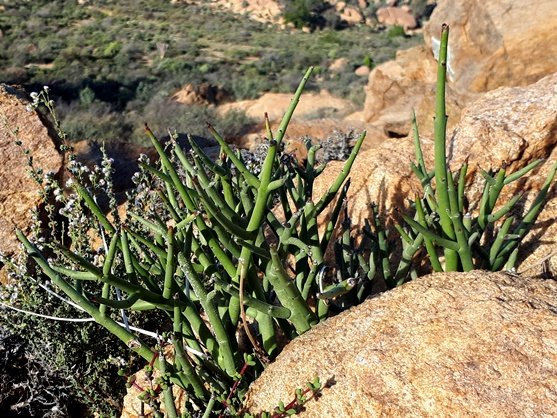Euphorbia spinea

Author: Ivan Lätti
Photographer: Jack Lätti
Euphorbia spinea is a much-branched, rebranched and rounded shrub with pointy stem-tips that reaches heights from 70 cm to 1 m. Branching is often opposite in about equal or dichotomous pairs. There is a tuberous root underground.
The untidy, tapering branches usually end in thin, dry, hard parts resembling spines. The spiny stem-tips seen here are very different from the often seen Euphorbia spines that are the hardened peduncle remains of stem-succulent cyathia. The ones in picture earned this plant the specific name of spinea. There is a Latin adjective, spineus, pertaining to thorns. Green here, the stems are often purplish in response to the harsh seasons these plants experience. The small, dark leaves are scale-like and stalkless, dropping off early.
The dioecious plant bears small yellow and red flowers, growing solitary or in pairs. Female bushes produce the inconspicuous purple fruit capsules of 4 mm in diameter on short, recurved stalks.
The species distribution is in northwesterly parts of the Northern Cape, central Namaqualand to the Richtersveld and eastwards into the Kalahari, also in Namibia.
The habitat is arid, rocky slopes and outcrops, here showing granite. The species is not considered threatened in habitat early in the twenty first century (Grenier, 2019; Van Rooyen and Van Rooyen, 2019; Frandsen, 2017; Williamson, 2010; iNaturalist; http://redlist.sanbi.org).

